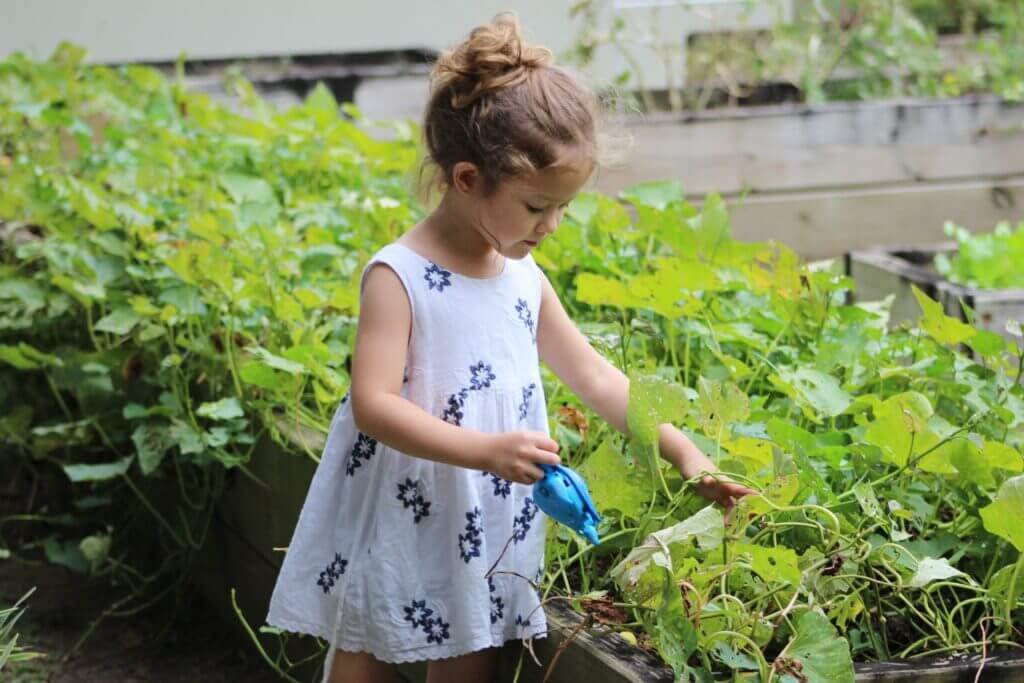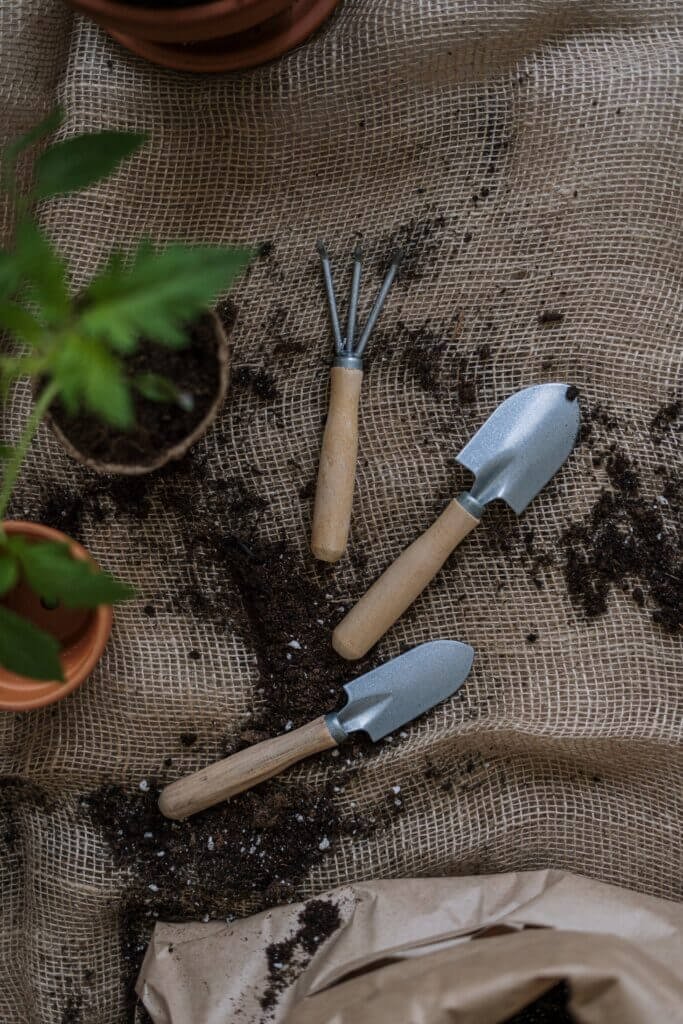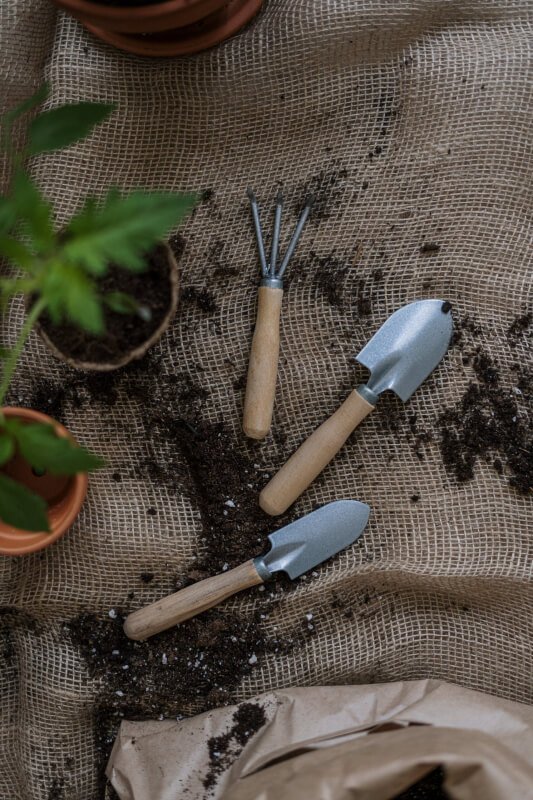Have you ever wondered how to create a lush and vibrant garden on your balcony? Look no further! In this article, we will explore the best practices for balcony gardening, providing you with all the tips and tricks you need to create a beautiful and thriving outdoor oasis in the comfort of your own home. Whether you have limited space or are a beginner in gardening, we’ve got you covered. So roll up your sleeves and get ready to transform your balcony into a botanical paradise!

Choosing the Right Plants
Consider the Balcony Layout and Size
Before deciding on which plants to grow on your balcony, it’s essential to consider the layout and size of the space. Take note of the available area and any limitations, such as railings or buildings that may cast shadows. This information will help you determine how many and what types of plants you can accommodate.
For smaller balconies, you may want to focus on compact plants or utilize vertical gardening techniques. Larger balconies offer more space for a variety of plants, including larger containers or even raised beds.
Assess Sunlight and Shade Conditions
Another crucial factor in choosing the right plants for your balcony is understanding the sunlight and shade conditions. Spend some time observing how the sun moves across your balcony throughout the day. Is it mostly in direct sunlight or in the shade for a significant portion of the day?
Plants have different light requirements, and matching them with the available light conditions is crucial for their growth and health. Consider plants that thrive in full sun if your balcony receives ample sunlight, while shade-loving plants will thrive in areas with limited direct sunlight.
Select Plants Suitable for Balcony Gardening
When it comes to selecting plants for balcony gardening, it’s essential to choose varieties that are well-suited for container gardening. Look for plants that have compact growth habits, don’t require extensive root systems, and can tolerate the sometimes challenging conditions of balcony living.
Some popular choices for balcony gardening include herbs like basil and rosemary, leafy greens such as lettuce and spinach, colorful flowers like marigolds and petunias, and even dwarf fruit trees like citrus or figs. Do some research and pick plants that align with your preferences and the conditions of your balcony.
Preparing the Balcony Space
Ensure Adequate Drainage
Proper drainage is crucial for the health and longevity of your balcony garden. Without adequate drainage, excess water can accumulate in the containers, leading to root rot and other plant diseases. Before you start planting, ensure that your containers have drainage holes at the bottom to allow water to escape.
If your balcony doesn’t have a natural slope or drainage system, you can use pot feet or risers to raise your containers slightly. This will allow excess water to flow out freely, preventing waterlogging. Regularly check the drainage holes to make sure they are clear and not clogged with soil or debris.
Evaluate Weight-Bearing Capacity
As you plan your balcony garden, it’s crucial to evaluate the weight-bearing capacity of your balcony. While plants themselves may not be too heavy, the weight of containers filled with soil and water can add up, especially if you have a large number of plants.
Consult your building’s guidelines or contact a structural engineer if you are unsure about the weight restrictions. Understanding the limitations will help you determine the number and size of containers you can safely place on your balcony without compromising its structural integrity.
Clean and Organize the Balcony
Before transforming your balcony into a lush garden oasis, take the time to clean and organize the space. Clear away any clutter, sweep or wash the floor, and remove any unnecessary items that may hinder your gardening efforts.
Organize your containers in a way that maximizes space and allows for easy access. Consider using shelves, hanging baskets, or wall-mounted planters to save space and create an aesthetically pleasing arrangement. Keeping your balcony tidy and organized will make it easier for you to maintain and enjoy your garden.

Container and Soil Selection
Choose the Right Containers
Choosing the right containers for your balcony garden is essential for the health and growth of your plants. Consider the material, size, and style of the containers to find ones that best suit your needs and the aesthetic of your balcony.
Plastic containers are lightweight and affordable, while terracotta pots offer better breathability for the roots. Self-watering containers can be a great option for busy gardeners as they help maintain consistent moisture levels. Hanging baskets and window boxes are perfect for maximizing vertical space and adding visual interest.
Keep in mind that the containers should have sufficient depth to accommodate the root systems of your chosen plants. The size of the containers will determine how much soil they can hold and how frequently you’ll need to water them.
Select Appropriate Soil Mixes
Choosing the right soil mix is crucial for the success of your balcony garden. Container gardens require a well-draining soil that holds moisture while allowing excess water to escape.
You can opt for pre-packaged potting mixes specifically formulated for containers, or you can create your own custom mix. A good homemade soil mix for container gardening typically includes a combination of organic matter, such as compost or peat moss, along with perlite or vermiculite to improve drainage.
Avoid using garden soil or topsoil straight from the ground in containers, as they tend to compact and retain too much moisture. Regularly check the moisture level of your soil and adjust your watering routine accordingly to ensure optimal growing conditions for your plants.
Consider Drainage Needs
Proper drainage is essential for preventing waterlogged roots and promoting healthy plant growth. Along with having drainage holes in your containers, you can also place a layer of gravel or broken pottery shards at the bottom to facilitate drainage.
To further enhance drainage, consider using a saucer or tray underneath the pots to catch excess water and prevent it from pooling on your balcony floor. Just make sure not to let the pots sit in standing water for long periods, as it can lead to root rot and other issues.
Watering and Fertilization
Establish a Watering Routine
Watering your balcony garden regularly and consistently is crucial for the well-being of your plants. However, the frequency of watering will vary depending on factors such as the types of plants, weather conditions, and container size.
As a general guideline, check the moisture level of the soil regularly by sticking your finger about an inch into the soil. If it feels dry, it’s time to water. During hot summer months, you may need to water your plants more frequently. In contrast, during cooler seasons, you may need to reduce the watering frequency.
Use Proper Watering Techniques
Proper watering techniques are essential to ensure that your plants receive the right amount of water without causing water stress or overwatering. When watering your balcony garden, direct the water at the base of the plants rather than overhead, as wet foliage can promote fungal diseases.
Take care not to water too quickly or forcefully, as it may result in the water simply running off the surface without deeply penetrating the soil. Instead, water slowly and steadily, allowing the water to soak in gradually. This ensures that the moisture reaches the plant roots, where it is needed most.
Implement Fertilizer Application
To support healthy growth and abundant blooms, fertilizing your balcony garden is essential. Container plants rely on the nutrients provided by the potting soil, which can become depleted over time.
Choose a balanced, slow-release fertilizer specifically formulated for container gardening. This type of fertilizer will gradually release nutrients into the soil, providing a steady supply of nourishment for your plants. Follow the instructions on the fertilizer package for proper application rates and frequency.
Be cautious not to over-fertilize, as it can lead to nutrient imbalances and burn the plants’ roots. Regularly monitor your plants for signs of nutrient deficiencies or excesses, such as discolored leaves or stunted growth, and adjust your fertilization routine accordingly.

Monitoring and Pest Control
Regularly Inspect Plants for Issues
Regular monitoring and inspection of your balcony garden are crucial to catch any early signs of problems such as pests, diseases, or nutrient deficiencies. Set aside time each week to observe your plants closely and identify any abnormalities.
Look for signs of insect damage, unusual leaf discoloration, wilting, or any pests that may have taken up residence on your plants. Catching these issues early on allows you to take appropriate action and prevent them from spreading or causing significant damage to your garden.
Identify and Treat Common Pests
Pests can pose a significant threat to the health and productivity of your balcony garden. Common balcony garden pests include aphids, mealybugs, spider mites, and whiteflies. Prompt identification and treatment are essential to prevent infestations from spiraling out of control.
There are various methods for treating pests, depending on your preference for organic or chemical solutions. Organic methods include using insecticidal soaps, neem oil, or homemade remedies like garlic or chili pepper sprays. Alternatively, chemical treatments are available as well, but it’s crucial to follow the instructions carefully and use them sparingly.
Utilize Natural Pest Control Methods
In addition to treating pests, consider implementing natural pest control methods to prevent infestations in the first place. Companion planting is an effective technique where certain plant combinations repel pests or attract beneficial insects that prey on pests.
For example, planting marigolds or nasturtiums near susceptible plants can deter aphids and other pests. Introducing predator insects like ladybugs or lacewings can also help keep pest populations in check. By incorporating these natural pest control methods, you can create a more balanced and harmonious balcony garden ecosystem.
Pruning and Pinching
Promote Healthy Growth through Pruning
Pruning is an essential practice in balcony gardening that helps promote healthy growth, maintain plant shape and size, and improve airflow. Regularly pruning your plants encourages branching and stimulates new growth, resulting in bushier and more productive plants.
Learn about the specific pruning needs of the plants in your balcony garden. Some plants, like herbs, benefit from regular harvesting, which naturally keeps them compact and encourages continuous growth. Other plants may require more targeted pruning to remove dead or diseased branches or to shape their growth habits.
Pinch Back Plants for Better Form
Pinching back plants is a technique that involves removing the tips of young stems to encourage branching and more compact growth. This practice is particularly useful for plants that tend to become leggy or top-heavy, such as certain herbs or flowering plants.
When pinching back, use your thumb and forefinger to remove the top few inches of the stem, just above a leaf node. This encourages lateral growth and results in fuller, bushier plants. Regularly pinch back your plants as they grow to ensure they maintain an attractive form and produce a more abundant display of foliage or flowers.
Utilize Proper Pruning Techniques
To ensure successful pruning, it’s important to utilize proper techniques. Start by using clean and sharp pruning shears or scissors to make clean cuts, as jagged or torn wounds can leave plants vulnerable to disease and infection.
When pruning, make cuts just above leaf nodes or lateral branches. This encourages the plant to direct its energy towards new growth rather than producing long, thin stems. Avoid removing more than one-third of the plant’s total foliage at a time, as it can cause stress and reduce the plant’s ability to recover.
Support and Trellis Systems
Provide Sturdy Support for Climbing Plants
If you plan to grow climbing plants on your balcony, providing sturdy support is crucial. Climbing plants like tomatoes, cucumbers, or vining flowers need a reliable structure to climb or trail on for optimal growth.
Consider installing trellises, stakes, or frames that provide adequate support for the weight of the plants. Secure these structures firmly to your balcony walls or railings, ensuring they can withstand wind and the vigors of climbing plants. As the plants grow, gently guide their tendrils or stems onto the supports, helping them establish a secure grip.
Install Trellises or Netting
Trellises or netting can be beneficial for training climbing plants and maximizing space on your balcony. These vertical structures provide a framework for plants to grow upright and offer support for heavy fruiting or flowering.
Choose trellises or netting that are appropriate for the size and weight of the plants you intend to grow. Attach them securely to your balcony walls or railings, ensuring they can withstand the weight and pressure exerted by the plants. Regularly inspect and adjust the supports as necessary to maintain the desired structure.
Train Plants to Grow on Supports
Training your climbing plants to grow on supports is key to achieving a visually appealing and well-organized balcony garden. As the plants grow, regularly guide their stems, tendrils, or runners onto the support structures, gently wrapping them or tying them as needed.
Encourage the plants to grow in the desired direction to maximize space and prevent overcrowding. Regularly prune away any excess foliage or branches that may obstruct airflow or hinder the plants’ ability to climb. With proper training and support, your climbing plants will thrive and provide an impressive display of vegetation or flowers.
Seasonal Maintenance
Prepare Balcony for Seasonal Changes
Seasonal changes require some adjustments and preparations for your balcony garden. As temperatures fluctuate, you’ll need to protect your plants from extreme heat, frost, or strong winds.
Before the onset of winter, move any frost-sensitive plants indoors or provide them with protective covers. Consider installing temporary windbreaks or barriers to shield your plants from harsh winds. During the hot summer months, provide shade for delicate plants by using umbrellas or shade cloth, or strategically positioning them where they receive filtered sunlight.
Protect Plants from Extreme Weather
Extreme weather conditions can be detrimental to the health and survival of your balcony garden. Monitor weather forecasts and take appropriate action to protect your plants in anticipation of severe storms, heavy rainfall, or heatwaves.
During severe storms, move potted plants to a sheltered area or temporarily bring them indoors. If heavy rainfall is expected, consider elevating your containers or placing them on plastic saucers to prevent waterlogging. Provide shade during heatwaves or cover delicate plants with breathable fabrics to reduce heat stress.
Adjust Plant Care Practices with the Seasons
As the seasons change, adjusting your plant care practices is essential to accommodate the evolving needs of your balcony garden. During the active growing season, plants require more water, nutrients, and care compared to periods of dormancy or slower growth.
Increase your watering frequency and adjust your fertilization routine accordingly to meet the heightened demands of growing plants. Be mindful of temperature fluctuations that may affect the moisture levels of the soil, and adjust your watering practices as needed.
Monitor your plants closely for any signs of stress or issues, and promptly address them to maintain a healthy and thriving balcony garden throughout the changing seasons.
Harvesting and Storage
Determine Optimal Harvest Time
One of the joys of balcony gardening is being able to enjoy the fruits of your labor through a bountiful harvest. To ensure you’re harvesting your produce at the optimal time, familiarize yourself with the specific signs or indicators for each plant.
For example, leafy greens are best harvested when the leaves are tender and before they become overly mature and bitter. Fruiting plants like tomatoes or peppers should be picked when they reach their mature color and firmness. Herbs can be harvested as needed, using the pinch-and-use method to encourage continuous growth.
Properly Store and Preserve Harvested Produce
Once you’ve harvested your balcony garden’s bounty, it’s crucial to store and preserve the produce properly to maximize shelf life and freshness. Different types of produce have varying storage requirements.
Leafy greens can be stored in airtight containers or plastic bags in the refrigerator to maintain crispness. Fruits and vegetables with longer shelf lives, such as tomatoes or cucumbers, can be stored at room temperature but should be kept away from direct sunlight. Herbs can be bundled and hung to dry, or chopped and frozen for later use.
Understanding the storage needs of each crop will help you maintain the quality and prolong the enjoyment of your homegrown produce.
Rotate Crops for Continuous Harvests
To ensure a continuous harvest and prevent soil depletion, practice crop rotation in your balcony garden. Crop rotation involves changing the planting locations of different plant families every growing season.
By rotating crops, you reduce the risk of pests and diseases that can build up in the soil over time. It also helps to maintain the balance of nutrients in the soil and prevent the overextraction of specific nutrients by a single plant family.
Plan your crop rotation by grouping plants into different categories, such as leafy greens, root vegetables, legumes, or herbs. Move these groups around from one planting season to another, following a planned rotation pattern that minimizes the risk of soil-borne issues.
Creative Balcony Gardening Ideas
Maximize Vertical Space with Hanging Baskets
Hanging baskets are an excellent way to maximize vertical space and add a touch of beauty to your balcony garden. These containers can be suspended from simple hooks or installed on pulley systems for easy height adjustment.
Select plants that have cascading or trailing growth habits, such as petunias, nasturtiums, or trailing herbs like thyme or oregano. You can create stunning displays by combining different plants with varying colors and textures in a single hanging basket. Be mindful of the weight and maintenance requirements of the plants you choose and make sure your hanging baskets are properly secured.
Create a Herb or Vegetable Garden
Growing fresh herbs or vegetables on your balcony is not only rewarding but also practical. Having easy access to homegrown herbs like basil, parsley, or mint can elevate the flavors of your meals. Similarly, growing your own vegetables, such as tomatoes, peppers, or salad greens, allows you to enjoy the taste of freshly harvested produce while saving money.
Choose compact or dwarf varieties of herbs and vegetables that are well-suited for container gardening. Position them strategically to optimize sunlight and ensure regular watering and fertilization to support their growth and productivity. With your own balcony herb or vegetable garden, you’ll have a constant supply of culinary delights at your fingertips.
Design a Balcony Miniature Garden
For those with a creative flair or a love for miniature landscapes, designing a balcony miniature garden can be a fun and imaginative project. Miniature gardens combine plants, tiny accessories, and decorative elements to create enchanting scenes in a small space.
Choose small plants like succulents or miniature ferns and incorporate them into a themed design, such as a fairy garden or a Japanese zen garden. Add tiny figurines, fairy houses, decorative stones, or miniature furniture to bring your miniature garden to life. Not only will it be a delightful conversation starter, but it will also provide a peaceful and magical escape right on your balcony.
In conclusion, balcony gardening has become increasingly popular, allowing people to enjoy the beauty and benefits of growing plants even in limited spaces. By considering the layout, sunlight conditions, and suitable plant varieties, you can create a thriving balcony garden.
Preparing the balcony space with proper drainage, checking weight-bearing capacity, and maintaining cleanliness ensures a healthy growing environment. The selection of suitable containers, soil mixes, and attention to drainage needs are crucial for plant health.
Watering, fertilization, monitoring for pests, and implementing proper pruning techniques are essential practices for maintaining a vibrant balcony garden. Supporting climbing plants, adapting to seasonal changes, and ensuring proper harvesting and storage techniques guarantee a continuous supply of fresh produce.
With a little creativity, you can maximize vertical space, grow herbs or vegetables, or create enchanting miniature gardens on your balcony. Whether you’re a seasoned gardener or just starting, balcony gardening offers endless opportunities to indulge your green thumb and beautify your living space. So go ahead, make your balcony a blooming oasis of nature’s wonders!


